Apr 30, 2019
INSURANCE FOR YOUR BOAT LIFT

Insurance Forms
With insurance, you expect EVERYTHING you own to be covered for damages. Even your dock and boat lift. But is that the case?
Here in Wisconsin, if you own a dock or boat lift, you have made a sizable investment. Of course, you want to make sure that they are insured. We urge you to make sure that all of your water equipment is protected. Insurance can be complicated, so you do need to talk to your agent. Make sure they research all scenarios.
Let’s discuss the various situations you may encounter.
Boat Insurance
Boat insurance is no different than auto insurance. But what exactly does the boat insurance cover? Boat lifts are not generally covered under a dock or boat policy. Boat insurance only covers the vessel itself. Think about it – your garage is not covered under your auto policy. Why would your boat, dock or lift be any different? Typically you have to have a rider to ensure your dock or lift.
Homeowners Insurance
Most homeowners believe that their dock and boat lift are part of their property. They think their homeowners’ insurance should cover them. Unfortunately, that’s usually not the case. Your dock may or may not be covered by your homeowners’ insurance.. Be sure to ask about it. Is your agent aware of it’s value?.
Liability insurance
It’s vital that you have not only physical damage but also liability insurance for your dock. Docks can be dangerous, and you’ll want to make sure you’re covered if someone were to get hurt on your dock. As for the physical damage coverage, make sure you understand what circumstances are covered, wind, fire, and snow all need to be considered.
Some Questions to ask your Insurance agent
Do you need:
Storage Insurance – Just like renters insurance you should consider storage insurance when your boat is not in use. Storage insurance can provide another layer of protection. The good news is there is less risk of liability while your boat is in storage. The insured premiums usually are reduced during that period.
Comprehensive coverage – This usually covers theft, accidental loss, or damage.
Replacement Costs – If you want to replace your boat after an accident, you will need to have coverage that is close to the current market value of your boat. You can adjust it to account for depreciation at each renewal.
Trailer Coverage – If you have a boat, you probably have a trailer to transport it around. Do you have coverage for your trailer and it’s cargo while being moved?
Accessory Equipment – Does your insurance cover your navigational equipment, lighting, and stereo systems and the other “toys” you added to the boat over time.
Mileage Restrictions – Does your policy restrict your mileage from where your boat is stored and used? Which insurance covers the boat while being transported to and from the storage unit?
Salvage insurance – What policy pays if your boat sinks after an accident or if you forget to replace the drain plug?
DOES YOUR INSURANCE POLICY COVER:
Geographic Limitations – Your insurance policy may have specific physical or bodies of water limitations. Going to take your boat around the country? You may need a plan that will cover it under those circumstances.
Good news: Your dock or boat lift, while stored on your residence premises (not necessarily in the water) would be covered by a standard Homeowners policy. It should be handled under a structure or as personal property. It will, however, be subject to the policy deductible. However, there may be other considerations.
WAVE DAMAGE – Damage to your lift or dock is NOT going to be covered if it is the result of waves. Even if the water is driven by the wind, it probably won’t be included. If wind-driven waves knock your dock or boat lift over, you will be responsible for damages. An exception might be if the waves caused a log, another dock or a boat to strike your equipment. The problem is, you have to prove it. If you see this situation happening your best option is to take photos. Better yet, a video of it happening might increase your chances of being covered. If the wind directly causes damage to the dock or lift, that loss should be covered by your insurance. Example, a dock accessory has blown off the dock by the wind, is probably covered under your policy.
WHAT ABOUT:
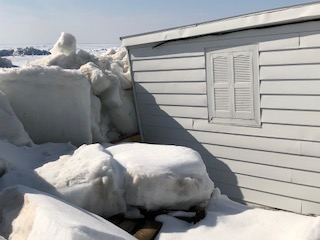
Ice Damage
ICE DAMAGE – Your dock or lift is not covered by damage caused by ice. If you leave your dock in the water over the winter and moving ice destroys it during the spring thaw, your Homeowners carrier is likely to deny that claim. Or if you leave your boat lift in the water and the pressure from freezing or thawing of the ice around it causes damage, again, this is most likely not covered. What if our dock is stored on your beachfront or lawn. If an ice shove occurs will it be covered? If your equipment is stored on your neighbors property and the ice gets to it, is it covered? Remember, it isn’t on your Resident Premises. See below for more information.
Beyond these circumstances, there are other circumstances where coverage could hinge on whether your dock or lift is considered a structure or personal property. This can matter because policy coverage provisions for structures and personal property are entirely different.
HOW IS YOUR DOCK DEFINED?
PERMANENT DOCK – If your dock or lift is permanently set in place and attached to its location, it is almost certainly a structure. But is it covered under your policy? The answer to this question may depend on which insurance company you ask. (This means you probably need to ask.)
PORTABLE DOCK – Most Wisconsin property owners remove their docks and lifts for the winter to protect them from ice damage. In that case, Is a movable structure still a structure? If your portable dock or boat lift is not considered a structure, then it should be regarded as personal property and typically covered against loss caused by one of the perils named in the policy. It includes fire, vandalism, and falling objects, among other damages. The other good news is that, as personal property, your dock or lift is covered anywhere in the world, even if it isn’t located where you live. Maybe.
What is the deductible?
However, the big question is – Is your dock or boat lift covered while in the water? You need to ask your agent.
DEFINE STRUCTURES
Things can get a bit more complicated if your dock or lift is considered a structure. First of all, most Homeowners policies only cover structures located on your “residence premises.” So if you own a dock or lift situated in a resort or on a vacant lake lot and it’s considered a structure, then you are going to need to add individual coverage for it. Many insurance companies offer an option to add coverage for structures located elsewhere.
Another problem – it may not be clear whether your dock or lift is on the “residence premises” or not. Perhaps you have a boat lift set up at a resort which you insure as a seasonal residence. If your policy includes coverage for Other Structures, will it cover your boat lift located elsewhere in the resort? Or what if you have a dock where you live, but your legal boundary stops just short of where it sits?
WHAT ARE “RESIDENT PREMISES”?
Standard homeowners policies define your “residenTpremises” as “including the structures and grounds at the location of your insured home.” .In the case of a dock at the edge of your land but just beyond your property’s legal boundaries, would it be considered at the same location as your home and therefore covered? In the case of the boat lift located across the resort from the lot you occupy, there may still be an argument to be made in favor of coverage. However, coverage seems less certain. Be careful, as some non-standard policies might define “residence premises” even more narrowly.
Insurance gets complicated, so my recommendation is to talk frankly to your agent. Talk about your winter and summer situation. Get a clear definition (preferably an opinion in writing, if it is not written in your policy. The definition is critical and may vary by the insurance company.
The information contained here includes a lot of “should be”‘s, “if’s,” “but”s, and “however”s. We are not insurance agents and opinions expressed here are just that – opinions. Now it’s up to you to get the conversations started with your agent.
PWS does Free quotes for insurance damages.
PWS is located at 7325 St. Hwy 57. That’s 1 mile North of County MM (Hwy 42) and 3 miles South of Sturgeon Bay at the Idlewild Road intersection. Our staff is here year-round to assist you.
Sep 14, 2021
Are you a Pro with a Pontoon Boat?
Pontoon boats are a relaxing way to enjoy boating any season of the year.
It’s Fall, and there are still days when you will wish you could be out on a pontoon boat. It might be a little cooler, but after the hot summer, it will be refreshing.
Pontoon Boats are unique
Pontoon boats have their own style with many amenities available. These boats are different in many ways from a normal powerboat. Handling them is another animal to tackle. Check out this article to get the most use of your pontoon boat.
Docking and Undocking
Pontoon boats leave the dock like any other vessel on the water. Yet, their body shape creates more surface area for the wind to push around. It amounts to a “giant sail.”, the tubes and vertical fences found around the deck act as a sail.
Adding to that difficulty are the boat tubes, which provide your floatation. Large gusts of wind are your mortal enemy. They can knock you off course on the water. The ability to push your pontoon into other boats means you need to know how to handle a pontoon boat. Plus, you must have stellar insurance coverage. SEE
To counter the winds, you have to be aware of them at all times. The pontoon boat’s secret is its exceptional control when used with short bursts of power. Regardless of what type of boat you use, idle the engine and point the motor in the direction you want to go. Then shift into gear. Next, use short bursts of power as you steer the boat. Before you know it, you’ll be out of the dock.
You’ll use the same understanding of the wind and maneuvers when heading back into the marina. Docking any powerboat (pontoons included) requires a little more side-to-side motion. You can learn more about these actions via this link.
Beaching
Beaching or mooring your boat to swim is half the fun of boating, no matter what type of vessel you own. People love beaching their boats to explore islands or soak up the sun. Luckily, both are simple processes and the same for every type of powerboat.
Start by traveling slow when you hit shallow waters, so you don’t damage your motor. Beaching requires you to push the front end of your vessel onto land. Do this carefully to prevent damage to the tubes.
Don’t head onto the beach too far; allow enough room to spin the boat around out into the water using the motor.
For mooring, make sure you have the proper tools to secure your boat via the anchor. Pontoon boats are more buoyant, so use fenders to protect your boat from other vessels.
Turning and Handling
Pontoon boats soar across the water, which makes handling them a ton of fun. Before you lose yourself in the moment, remember that there are no lanes out on the water. Always check your surroundings before making a turn or spinning your boat around.
With that safety tip in mind, you’re ready to tackle the water. Pontoon boats are very stable. You don’t have to worry about flipping or rolling the boat over in normal conditions.
But rough waves and tight turns mean you can’t rule out the possibility. Still, it isn’t much of a concern for the modern pontoon boat.
You do have to worry about causing the propeller to leave the water when making a tight turn. You can either back off of the turn, deaccelerate or trim the engine downwards to remedy the issue. When making sharp turns, equipment and people on your deck are likely to be tossed to one side depending on the speed. Do they have life preservers?
Acceleration
Once you hit open waters, you’re ready to pick up speed. Don’t treat your pontoon boat like a race car, though. Instead, speed up steadily until you reach your desired speed. Keep in mind that the bow will level out, which means you’ll need to trim the engine if you want more speed.
Your engine might rise too far out of the water as you speed up. That’s normal and easy to fix by trimming the motor. Your boat may slow down, and you’ll hear a howling sound near the propeller. Or, the boat will lose a little stabilization when this happens.
Keep in mind that every boat comes with a manufacturer’s recommendation for top speeds or RPM. Most recommend 75% of fully open throttle. It helps to read up on this statistic before pushing your boat to its limits. Use less throttle for more fuel efficiency.
Keep in mind that more crowded waters demand slower speeds. There are rarely legal speed limits on open water, so be mindful of other boaters in the area. Keep an eye out for swimmers as you approach other boats or the shoreline.
Stability Tips in Rough Waters
A pontoon boat handles well, even in rough water, thanks to its dual or triple hull design. Yet, even with the added help, you need to drive a pontoon boat carefully in these conditions.
Experienced boaters recommended that you keep an even load on board. To do this, you must include both objects and passengers. When rough waters arise, make sure your passengers know to even out their weight on deck and sit down. Don’t forget to make them wear life preservers for their safety. The larger your boat, the easier this is to maintain.
Try to avoid heading straight into giant waves. Excessive splashing could damage the electronics in your boat if they take on water. If you must head nose-first into oncoming waves, trim the engine down to help keep the boat’s nose/bow upward. Otherwise, take the waves at a 30 to 40-degree angle.
Finally, sports handling packages are an enormous benefit here. These include better nosecones, power-assisted steering, and higher horsepower to combat choppy waters.
Become a Pro
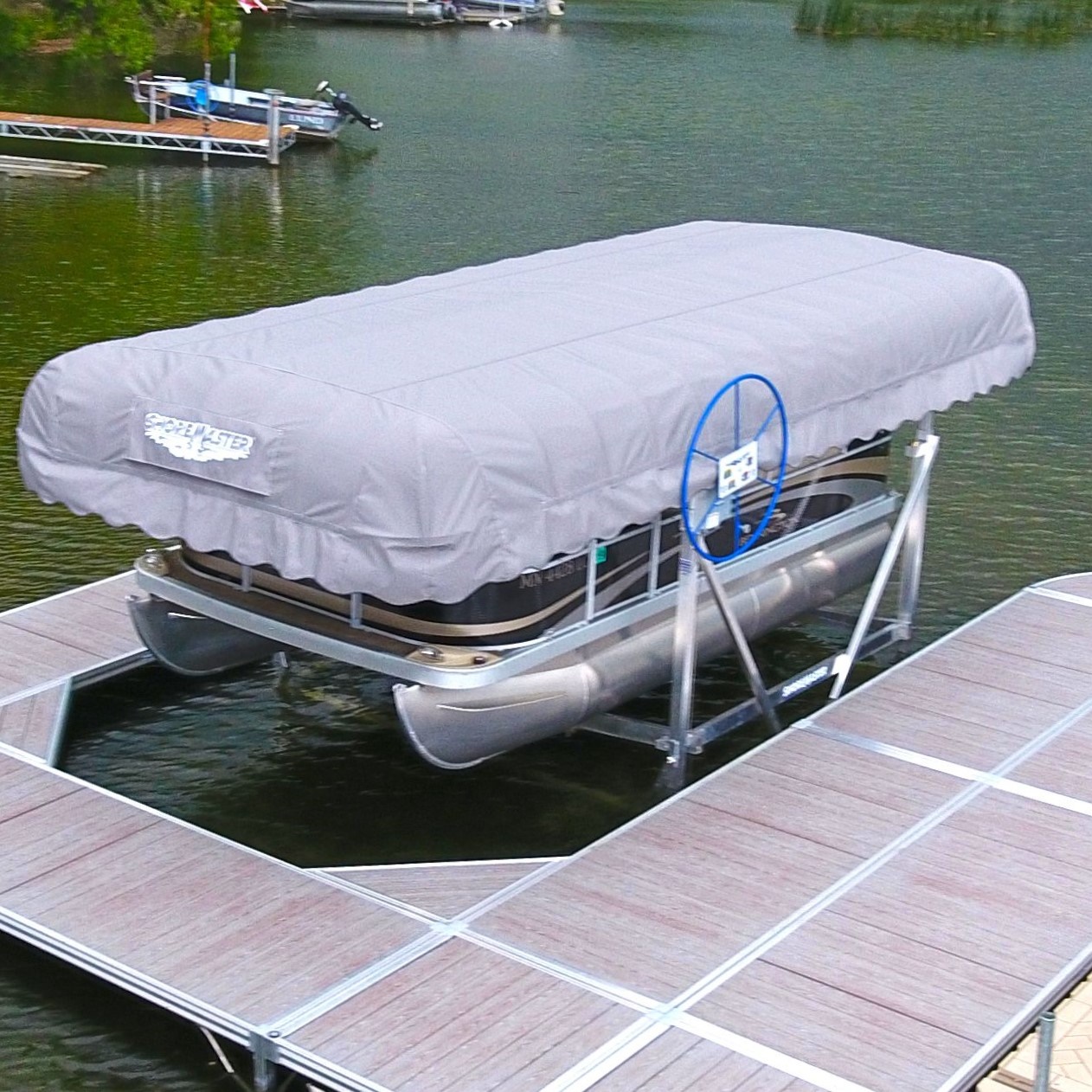
Pontoon Boat Lift
That means don’t head out onto the water when you know a storm is on the way. A pontoon boat is an investment you don’t want to risk for a few more minutes of fun. If inclement weather strikes, head back to the dock and put your boat back on your lift.
Where is Pier & Waterfront Solutions?
Located at 7325 St. Hwy 57, it’s 3 miles south of Sturgeon Bay and 1 mile past the intersection of Cty MM (heading north). Look on the right side, one mile north, at the next corner (Idlewild Road and Hwy 57).
For your protection PWS implemented these preventive measures:
1. Conducting as much business as possible by email, text, or phone.
2. Site visits will continue. When in-person contacts are necessary, we will follow “social distancing” guidelines.
3. Our display yard is always open for you to examine at your leisure. All displays have a numbered, red tag on them. If you want more information or pricing, please reference that number.
Thank you for allowing us to work with you.
YES – PWS is OPEN and waiting for you!
Please call, message, or email PWS with any questions.
Let’s all stay safe!
Sep 7, 2021
SUMMER HAS ENDED
Summer for many people has ended. It’s a sad time for many people. People are heading home. Many families have to get back for school for the kids and can only come back on weekends. Still, there will be some great days left this Fall.
Many of our customers are from out of state. In fact, we have customers from almost ALL the United States. They return each year to enjoy some of our great Wisconsin weather. The size of the crowds will begin going down after Labor Day.
Have no FEAR! Spring is just a couple of months away!
But still, it’s a sad time for many people. Our Chicago and Minnesota customers are among the saddest at this time of the year. Why? They face another year of being defeated by the Packers.
Who else faces problems at this time of the year?
Another group is people with storm-damaged equipment. The Fall storms get stronger in September and October. That’s why we move as fast as we can to get to your location to safeguard your equipment by removing them for the year. The freezing water doesn’t help either.
If you have damage to your equipment please call Jerry @ 920-493-4404.
Not using your docks and lifts anymore this year?
It’s a good idea to drop Keri, our Service Manager, a line letting her know you are ready to be removed. Give her a date when your canopy will be down and your boat stored for the year. Email your message to Keri@wisconsinpws.com. She will put you on the schedule.
It’s particularly tough this year for our crews. One of the dealers in Door County closed expectantly before Memorial Day. Our teams will be working longer hours to adjust to the influx of new customers. As the days get shorter, they will be working by their headlights to meet the schedule.
Four things you should know about fall storms:
- PWS will assist you if a storm damages your equipment. We prepare Free estimates to cover your damage. Insurance companies then use the estimates to prepare a settlement for you.
- We recommend you read this article before talking to the insurance company. Take pictures of all the damage. The more images, the better.
- PWS can also salvage your equipment and make winter repairs, so you are ready to go in Spring.
- PWS will move your equipment to another location if you sold it or bought another property.
PROPERTY DAMAGE?
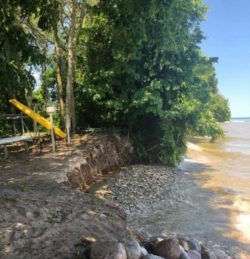
Shoreline Erosion
Do you have property damage, eroded beaches, and lawns? Don’t forget, Pier and Waterfront Solutions has a complete rip rap service available. We’ll have your shoreline repaired for Spring.
Call DAVE at 920-905-2588 for more details.
Where is Pier & Waterfront Solutions?
Located at 7325 St. Hwy 57, it’s 3 miles south of Sturgeon Bay and 1 mile past the intersection of Cty MM (heading north). Look on the right side, one mile north, at the next corner (Idlewild Road and Hwy 57).
Is PWS OPEN?
Pier & Waterfront Solutions remains “open.” We have implemented measures to help ensure the safety of our employees and visitors. PWS continues to work to maintain the trusted service that you have come to expect.
PWS implemented these preventive measures:
1. Conducting as much business as possible by email, text, or phone.
2. Site visits will continue. When in-person contacts are necessary, we will follow “social distancing” guidelines.
3. Our display yard is always open for you to examine at your leisure. All displays have a numbered, red tag on them. If you want more information or pricing, please reference that number.
What can YOU do to help us?
1. Please conduct as much business as possible via emails, messaging, and emails. This step protects everyone involved.
2. When you see our crews installing equipment, please practice “social distancing.” Remain at a safe distance.
Thank you for allowing us to work with you.
YES – PWS is OPEN and waiting for you!
Please call, message, or email PWS with any questions.
Let’s all stay safe!
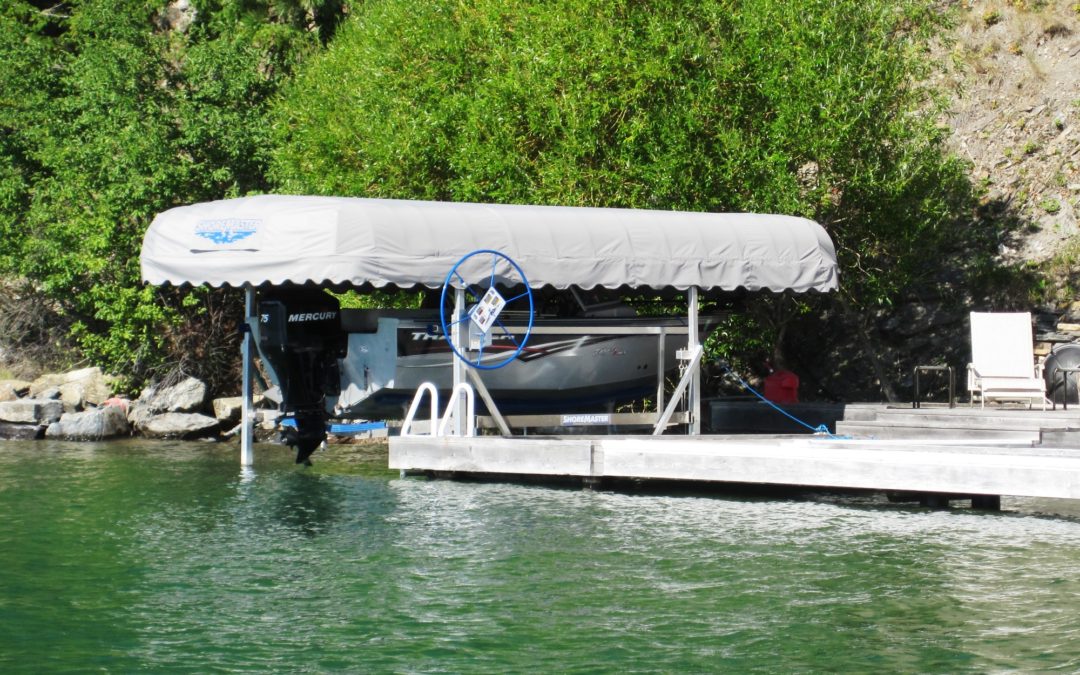
Feb 26, 2019
Boat Lift Calculations
Boat lift calculations are explained in Part 4 of this series.
Have a new boat and don’t know what boat lift size you need? We will outline the general procedure for determining the proper boat lift size to use. Much of the information we ask for can be taken from the boat registration. To give you an accurate estimate we need as much information as possible.
Finding the Overall Weight
Where can the specifications for your boat be found?
The specifications may be provided in a brochure, on a website or a specification sheet. If you can’t find them, among other resources, try using the online NADA guides www.nadaguides.com/Boats/. Go to the website, and look for “specifications” for your model and year.
Before giving you a final recommendation on lift capacities, we usually check more than one source. We always use the higher of the two numbers if there is a difference.
For this post, we went to nadaguides.com/Boats/2013/Chaparral-Boats/H2O-19-SPORT__/32036233. We selected the 2013 Chaparral Boats H2O 19 SPORT.
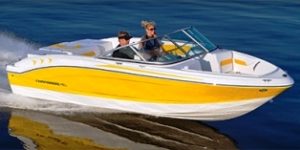
2013 Chaparral Boats H2O 19 SPORT.
The following (edited) information comes from that website.
Suncoast model weight includes the weight of the outboard motor.
[As you see below, there are (10) different engine sizes available. That means (10) different weights. Thre information is correct if they used the original motor from the manufacturer. It is best to check this information against your actual motor(s).]
115-135 HP (3.0L)
136-200 HP (3.0L – 4.3L) (included)
201-230 HP (4.3L – 5.0L ##)
231-265 HP (5.0L – 5.7L ##)
266-300 HP (5.7L #)
301-350 HP (5.7L – 8.1L ##)
351-400 HP (5.7L – 8.1L ##)
401-425 HP (8.1L ##)
426-470 HP (8.1L ##)
471-500 HP (8.1L ##)
Engine selection Key – (#) For 1993-1997 model years include 7.4L (300 HP) Mercruiser engine.
(##) Use your engine’s horsepower rating.
Under specifications, you will also find: [Condensed for our purposes]
Horsepower (bhp) 135
Length (ft-in / m) 19′ 4” / 5.9
Beam (in / m) 90 / 2.3
Dry Weight (lbs / kg) 2540 / 1152
Fuel Capacity (gal / L) 30 / 114
Please note, the dry weight provided by the manufacturer often does not account for the weight of outboard motors. Be sure you know what the number represents.
If, at any time, you would rather have PWS do the calculations for you, contact us with this information:
Model year;
Brand;
Model; and
Length of your boat.
What other items are needed for boat lift calculations?
You now have the manufacturers’ boat weight. We still need to account for:
- The weight of the fuel;
- All gear on the boat;
- Water storage;
- Non-factory additions.
Keep in mind, you will be lifting all of that weight each time your boat is raised out of the water.
IMPORTANT – EVERY boat lift manufacturer will tell you that lifts are NOT designed to transport people.
In real life, we also realize that the elderly or children often stay in the boat until it is raised. We do NOT recommend this, and you take responsibility for this action.
However, if you must take this action – allow for that added weight in your calculations. Remember, the lift can only handle it’s rated capacity. If you transport people, you are also assuming that the cables are at 100% capacity with no rust or frays. See also – https://wisconsinpws.com/lift-cable-inspection-replacement/
Now let’s look at the information provided above:
Gasoline weighs approximately 6 -7 # per gallon. Multiply this number times the capacity of your fuel tank to arrive at the weight of a full tank of gas.
Water weighs approximately 8 lbs. per gallon. Now check the capacity of all freshwater tanks, wastewater tanks and don’t forget any live wells.
Non-factory modifications – These include wakeboard towers, bimini tops, extra seating, generators, coolers, and swim platforms. It all adds up.
Gear – This include skis, wakeboards, scuba equipment, etc.
Now, add these numbers to your boat weight.
Think you’re done? Not quite yet!
Now add a “margin of safety.” This is usually between 10% and 20%. At this point, we select the next higher capacity for your lift. Why the need for all this? Here’s a simple example of why we do this.
A man picks up a ball. For our purposes, let’s say it weighs ¼ #. This presents no problem.
Next, the same ball is coming towards him at 90 mph. It hits him. It hits him. Do you think the ball “feels like” it weighs only 1/4 #? Obviously, the moving object will have the effect of “more weight’ even though it still weighs just ounces.
Why the comparison? Many times in a storm, the waves will wash against the bottom of a boat. In severe storms, the boat may actually bounce up and down on the lift as the wave rolls across the bottom. Now you have a boat weighing 2,500 – 3,200 pounds bouncing up and down. The added “weight” of the boat at this time may result in a cable breaking. This situation is especially true if the lift was not properly sized originally or the cables are not in good shape. In severe cases, the boat may be washed off the lift completely. A future post will address the insurance issue – watch for it.
Will the lift be able to take the “shock” of that bouncing? That’s why we go to the next size up. This is a common cause of cable failure. These “shocks” could cause a cable to break if they have rust or frayed strands. For more information SEE https://wisconsinpws.com/wp-admin/post.php?post=404&action=edit
The initial extra fee is small in comparison to the cost of damage to the lift or your boat. You could lose your boat & motor completely.
Do I need more Information?
What other things adversely impact a boat lift? What if your boat is in a downpour without a canopy or cover? Did you remove the drain plug while the boat is on the lift? (Don’t forget to replace it before you lower the boat).
What if you don’t know that the bilge pump is malfunctioning. These things may result in lift failure. A safety margin and a few extra dollars now may save you a lot of $$$$ later.
The point is that little things can add up and it is best to err on the side of caution.
What’s next?
The next step is to look at your boat WIDTH. In our example, we have a 90” width.
Does this mean a 96” width lift will work for you? Not even on a calm day!
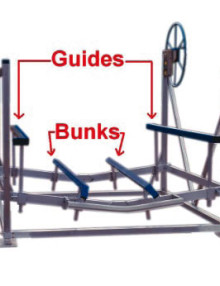
Bunks & Guide options
We equip our boat lifts with guides to keep you centered on the bunks as shown in this example. The guides require a minimum of 6” width each – that’s 12” for a total of 102” in this example. Ok, so a 108” lift will work – right? Wrong!
If you have deep water, you can maintain control of your boat on a calm day. You might be able to get by with a 108” wide lift. However, what if the wind is blowing from the back or one side? Can you control your boat under with only 6” of “spare room”?
In shallow water, you have to “trim” (raise) the motor. Shallow water is the usual situation on the bay of Green Bay. When you trim your motor, you lose control of the direction and speed you are entering the lift. Any decent wave will push you to one side. How many days are absolutely calm?
We are going to cover this situation in more depth in an upcoming post but for now, follow our recommendation for a 120” width. This width will do three things for you:
1. Allow the “guides” to place you properly on the lift;
2. Reduce the risk of damage to your boat and dock; and
3. Give you a higher resale value.
We never have a complaint about the lift being too wide
IS YOUR BOAT CENTERED?
Although not part of the equation – is your boat centered width-wise? Failure to do so will put added strain on the cables on one side. The lift ratings are based on equal weight distribution on all of the cables.
Don’t forget – you need to correctly place your boat “forward” on the lift also. If it is too far forward or back, you have too much weight on the front or rear cables. You risk breaking a cable. The weight has to be distributed equally on the front and rear cables. In a storm, this can also be a factor in your boat being washed off the lift despite being in it’s highest position.
What happens when the boat is too far forward or backward? For more information See https://wisconsinpws.com/wp-admin/post.php?post=1944&action=edit
After all this, you now have the proper lift capacity and the correct width. That about sums it up.
By the way – What would be our recommendation for this example – a ShoreMaster vertical boat lift – SM4010 DVS. (4,000# capacity, 120” wide).
Happy Boating!
Need Help Selecting a Boat Lift For Your Home or Cottage?
Do you have a friend that may be interested in this information? Please share a link to this page with them.
PWS is located at 7325 St. Hwy 57. That’s 1 mile North of County MM (Hwy 42) and 3 miles South of Sturgeon Bay at the Idlewild Road intersection.
Our staff is here year-round to assist you.
Jul 31, 2018
Boat safety
Boat safety should be part of Wisconsin’s three great seasons for boating. Yes, 3 seasons and then comes winter!
Boat SafetyTips
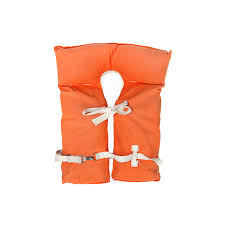
Boat Safety Rule #1- Everyone needs one
- Life Jackets are Mandatory: We all understand that life jackets can save lives. But so many of us don’t bother wearing them when we hit the water. Whether you don’t like the way they feel, or they don’t look cool, life jackets are there for a purpose. Make sure all kids wear their life jackets. A life jacket could easily save your child’s life. Besides – It’s the Law.
- Just like driving a car – Drinking and driving do NOT mix: Have a designated driver if you plan to drink. In Wisconsin boating violations, like drunk driving, count against your driver’s license and your insurance premiums.
- Check Your Lights: Are all of your boat’s lights working correctly? Don’t forget how quickly the sun sets. You don’t want to go back in the dark.
- Watch the Weather: Summer weather in Wisconsin can be unpredictable. Make sure you check the forecast and continue to keep tabs on the weather throughout the day. Don’t get caught in a sudden storm. It only takes about 15 minutes to go from clouds to a violent storm on the Bay.
Avoiding Boating Accidents
Here’s a hard fact: Boating accidents, like failure to yield right of way, to approaching a dock too fast, are all too common. Most of these accidents were avoidable.
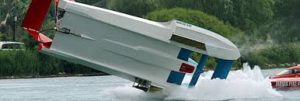
Maybe I should have turned wider
Additionally, 15% of all boating deaths had alcohol involved. Another 83% of drowning victims did not have a PFD.
It’s not a question IF boating accidents are a problem but instead, what can be done to reduce the rate of these accidents?
How You Can Prevent a Boating Accident
- Boating and Booze Do Not Mix: Do not drink and operate your vessel. If you take drinking and driving your car seriously, then the same caution should be exercised on the water.
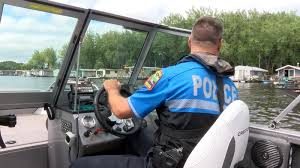
Boat Safety Rule #3- Don’t get a visit from him
Operating a boat while over the alcohol limit is illegal and puts everyone on the water at risk. You have slowed reaction times and a lack of judgment.
- Make PFDs mandatory: So often, an otherwise minimal accident can turn tragic if a passenger falls into the water without it. Remember, they do not have a seatbelt.
Though you may be a good swimmer, there are many ways that you could end up injured and unable to swim. That’s not to mention the possibility of rough waves, which could make swimming back to your boat impossible.
- Follow posted speed and wake limits and stay vigilant for risks.
Like car accidents, some things are out of your control. However, boating accidents are minimized if boaters simply:
- Stay sober behind the wheel,
- Wear PFDs,
- Follow speed and wake limits, and
- Brush up on the essential safety standards of operation.
Is a Boat Safety Course for you?
If you’re a new boater, boating safety courses are a no-brainer. Here are some take-homes you will learn:
- Boat Operation: There are some easily overlooked best practices that can help you avoid collisions, run aground or otherwise damage your boat.
- Emergency Procedures: From fires to dangerous weather, when you’re facing an emergency on the water, every second counts.
- Navigation: Even if you know your favorite boating spot like the back of your hand, there are too many variables to go without trip planning and preparation. These classes can teach you the safest ways to plan your next boating trip.
- Equipment: Even the safest boaters should know what equipment could save their lives in emergency situations. Ensure that all of your safety equipment is up to the task of keeping you and yours out of danger.
- Emergency Cut-Off Switch: If you go overboard, the last thing you want to see is your boat speeding away from you – especially if you aren’t wearing your PFD. Use a kill switch/emergency or cut-off switch fastened to your clothing. This ensures that the engine will shut off if you find yourself thrown into the water. It’s much like the shutoff switch on a treadmill at the gym.
- Keep Contact: Keep others informed about your boating plans. Let them know where you are going, especially if boating alone. Always keep a VHF radio on you, as well as your cell phone, safely stored in a waterproof container.
Boating safety classes will teach you the right procedure for most critical situations you may encounter while boating.
Practice boat safety and enjoy the ride.
Reminder
PWS is located in the center of Door County at 7325 St Hwy 57. It is located 1 mile North of County MM (Hwy 42) and South of Sturgeon Bay. Look for the intersection of Idlewild Road.
Want us to address a dock or boat lift topic for you? Feel free to give us a call.
Call Jerry at 920-493-4404 or Email Jerry@wisconsinpws.com for more information.















